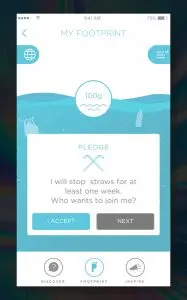It’s getting easier to avoid plastic. Zero-waste grocery stores, from Brooklyn to Hong Kong to Berlin, sell food without plastic packaging. It’s possible to buy plastic-free toothbrushes, cardboard poop scoopers for your dog, and biodegradable vibrators (made from plastic, but plant-based). Still, plastic is ubiquitous, and most of us probably buy at least one item made from the material or packaged in it every day. A handful of calculators are designed to help you estimate how much you’re contributing to the problem.


A results page from the Greenpeace plastic use calculator. Take the quiz here. [Screen Capture: Greenpeace]The changes that need to happen are systemic. As it stands, the world is on track to produce four times more plastic in 2050 than it did in 2010. Much of the plastic use happens before consumers make choices in a store; if your fruit showed up at the supermarket in a shrink-wrapped pallet, avoiding a plastic bag in the produce aisle won’t solve the whole problem. Still, consumer pressure is leading to larger changes, from some supermarkets phasing out single-use plastic packaging on their products to mass manufacturers experimenting with refillable packaging.
A tally of their total plastic use can help consumers make different choices and lobby for broader change after understanding their own role in the problem. “We wanted to raise the awareness of plastic pollution and–most importantly–our individual impact,” says Hanna Pamula, who created the tool for Omni Calculator. “Many may claim that it doesn’t matter, as we use way less plastic than big companies, but when we’re looking at yearly or lifetime plastic use, the amount is horrifying. Also, as customers, we have a strong influence on the companies by our everyday choices.”
Recognize your company's culture of innovation by applying to this year's Best Workplaces for Innovators Awards before the extended deadline, April 12.
